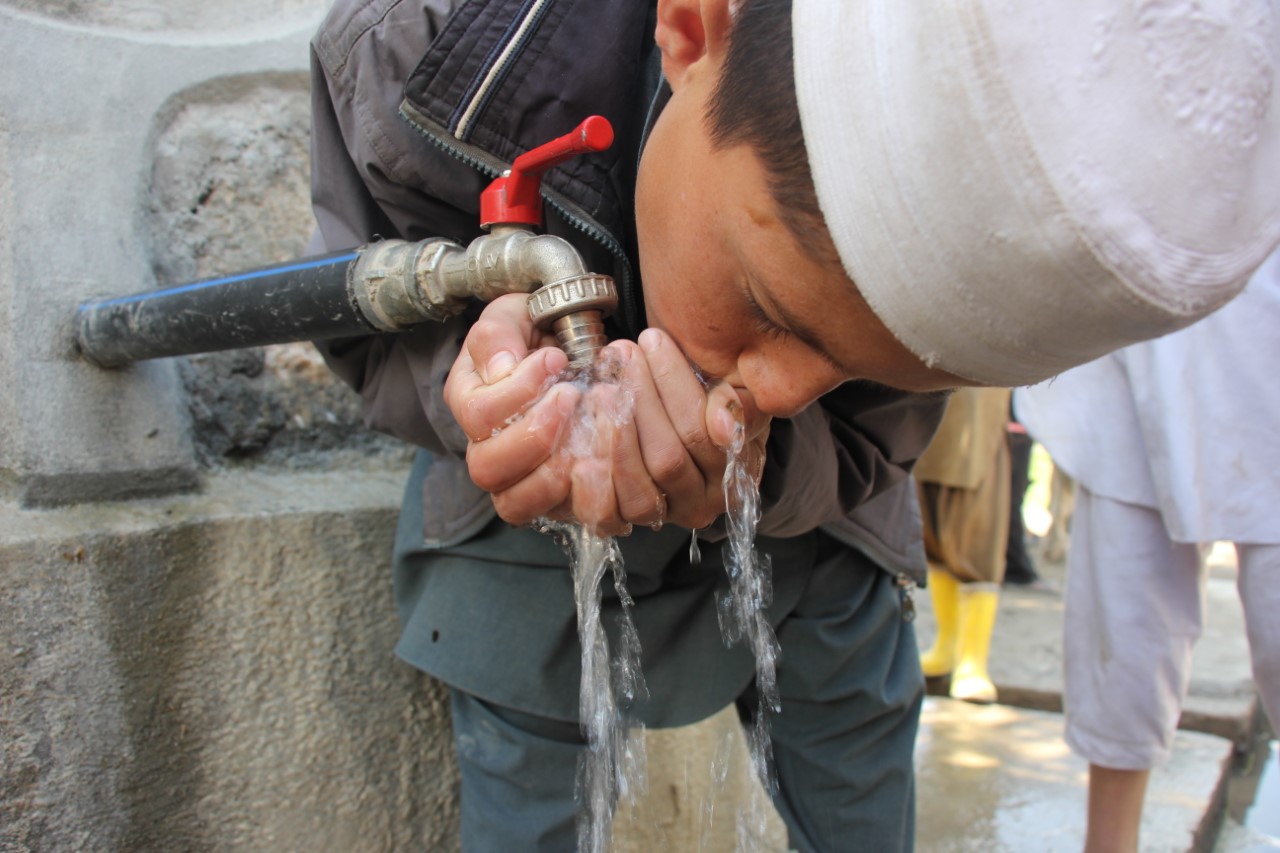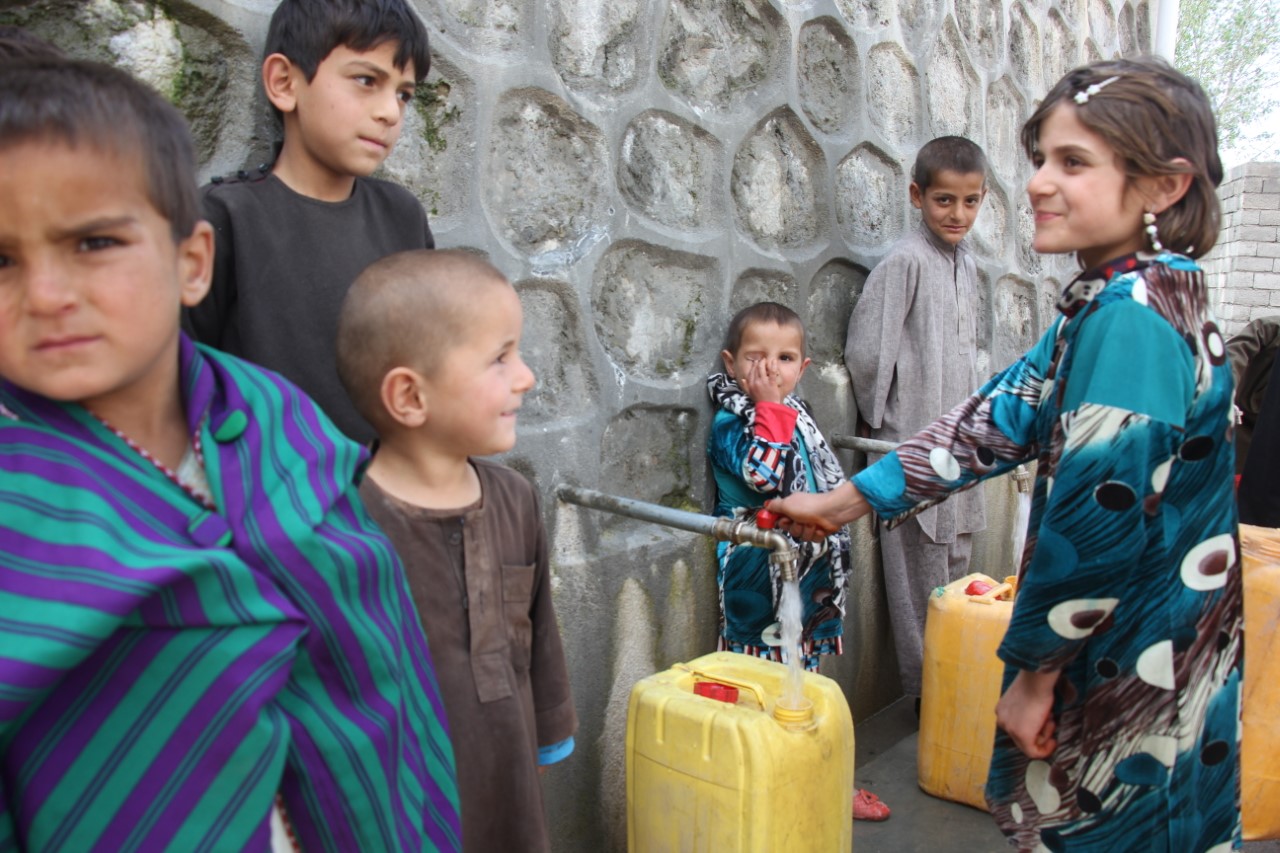WASH project benefiting 2 400 families’ in Khalyan, Takhar
We arrived to Khalyan and found a typical Afghan village. Almost everyone in the village is a farmer by profession and harvesting agricultural lands. Khalyan has almost 18 000 inhabitants distributed among approximately 2 400 families. In the village we meet villagers saying that “For the first time in our life, we felt the real taste of potable water”. The potable water was the result of a pipe scheme that SCA implemented in the area.

The poor farmers in the area lacked potable water. The SCA project started with digging ponds, in which water from rain and floods were stored. Humans – people and animals both were benefiting from it. Another part of this WASH project was to transport water in pipes from 18 kilometer distance.
Khalyan is located 150 kilometers north of Taloqan, the capital city of Takhar province. The road we traveled on was paved. The area on both sides of the road was lushing green. Although two rivers flows with a few kilometers distance the fields in the area are irrigated only with rain water.
“Khalyan has a history of more than seven centuries, in past it had less population and may had wells, but since I know, we were digging ponds where the water from rain, snowfall and floods were standing. Not only people, but also animals were using it for drinking. We were well aware of ponds being contaminated but we had no other choice,” informed us Mr. Abdul Dyan, a prayer leader of the village.
Still we have few wells, but the water is contaminated and salty. We can’t use it for drinking and cooking. Contaminated water was a major cause of abdominal related diseases. In summer if ponds were running out of standing water, we had to travel Yang Qala district located few kilometers away to bring potable water”, Abdul Dyan added.
“Due to the lack of potable water in the area, our children were deprived of education. They were transporting water. But now we have access to water and our children are free to attend schools and study,” he stated.
According to Mr. Abdul Dyan, local community had repeatedly requested the government ministries to resolve their issue. Engineers from Ministry of Rural Rehabilitation and Development surveyed the area and left the area in troubles that there are no chances of finding a solution to their troubles.
Last year, the dwellers approached to the Swedish Committee for Afghanistan. The engineering unit carried out an observational survey and did the technical design and cost estimation which found that the villagers can be provided water from a spring located 18 kilometers away in mountains. SCA with an amount of above 9.2 million AFS funded by the Swedish development agency, SIDA, launched the project.
Saifurahman of 12, is a student of class fifth. He says “I was bringing potable water in plastic cans from other villages. It was a job for all children of my age, to bring water from other areas. Thus we were not able to go to school. But now we have water on our doorstep and all my friends are now going to school.”
According to Mohammad Asif Hikmat the engineering project manager of Takhar; the project included filtration and covering system of spring, main pipe extension and carrying it on above three rivers in suspension cabling system, in order to avoid any possible damages to the pipes during the floods. According to him, the project was carried out in close coordination of the engineering units of SCA North Eastern Regional Office, situated in Taloqan and Kabul Management Office.
He said, the project was launched in June 2015 and was completed in November, within six months. The local community were also involved in the project and contributed for all required excavation, pipe and cements transportation from the dumpsite to the works locations and provide voluntary labors while needed.
A big tank with the capacity of 100 cubic meter was constructed around two kilometers on the top of hill as first collector/reservoir, where the water from spring is creased and stored and then further it is distributed to six other sub reservoirs. Each sub reservoir measures for the capacity of around 40 cubic meter. Sub reservoir provides water to 300-400 families. These water reservoirs has a system of over flow in order to keep safe water tanks from damages as well as cleaning pipe while the reservoir needs to be clean. The over flowing water is directed to the ponds by pipes which could be used for animal, house gardening and trees plantation around the village which will contribute for the environment improvement and greenery.
These water tanks is equipped with steel leaders inside, to wash and clean once a year. Local communities have deputed one person for each water tank to take care of it and protect it from damages.
A number of families have transported water to their homes through pipes. They have connected pipes to the water tanks.
In connection of WASH project, SCA also implement hygiene project in the area. More than 250 latrines have been constructed and villagers are provided the education of self-hygiene. Totally 6 742 people received hygiene training, 3 462 males and 3 280 females.
Jamaluddin, a local shopkeeper, who sells vegetables says “I am growing a small garden in my house. Before execution of water project, I was not able to waste few drops of water. But now we have enough water and can water my small garden with it”.
